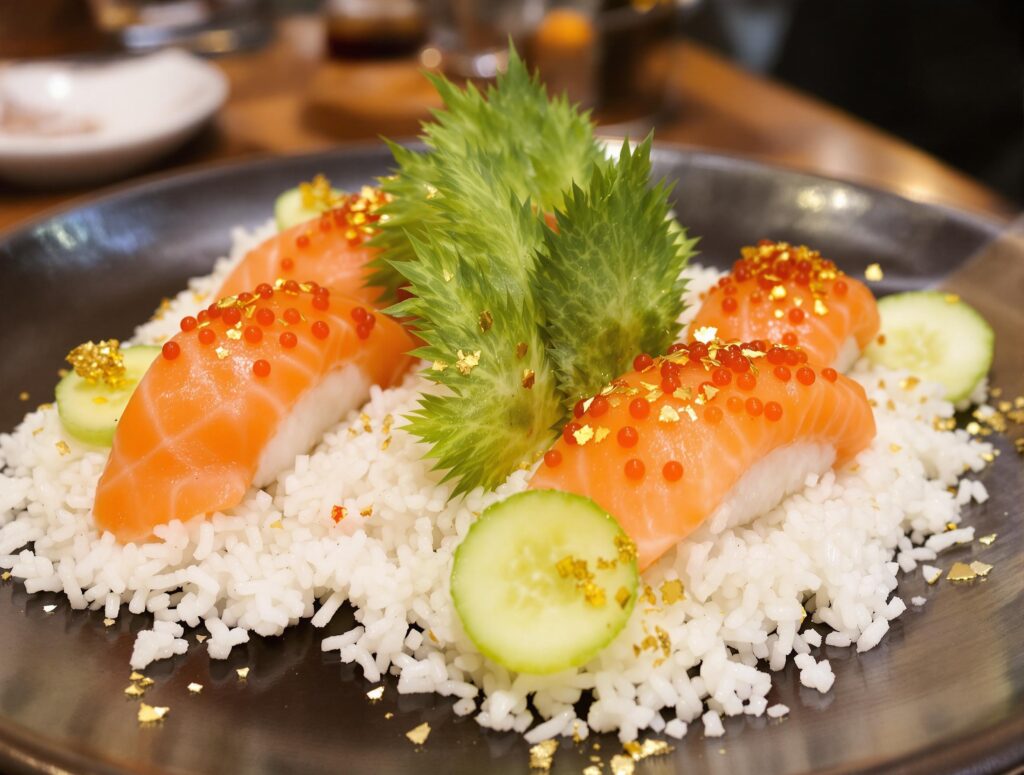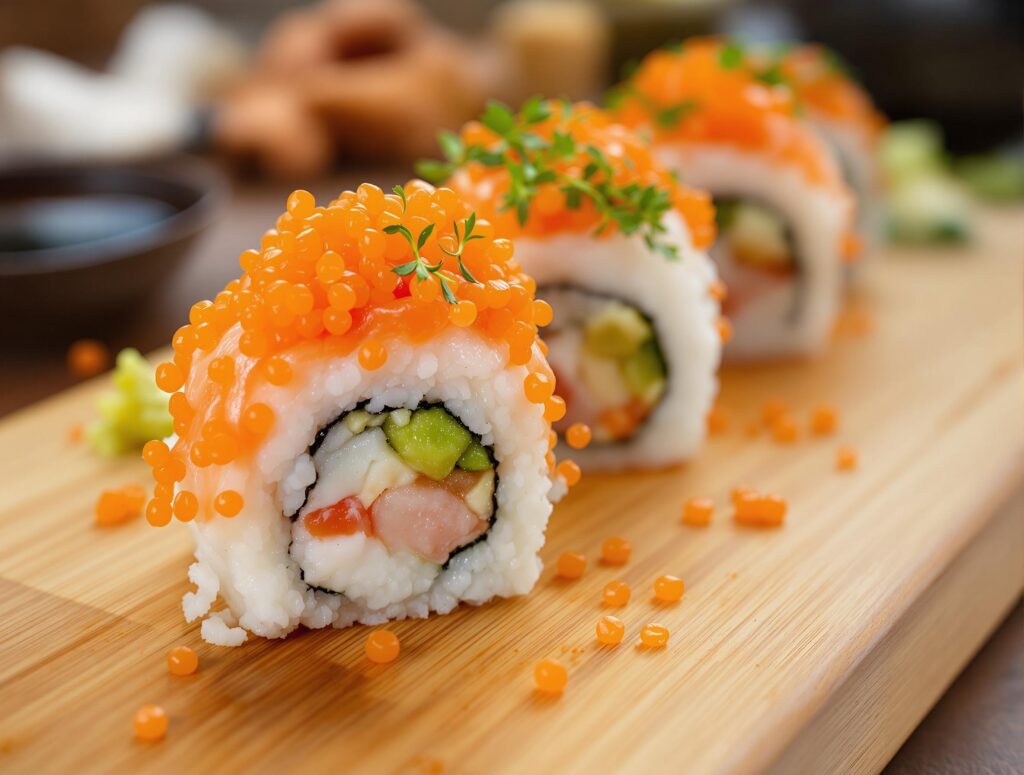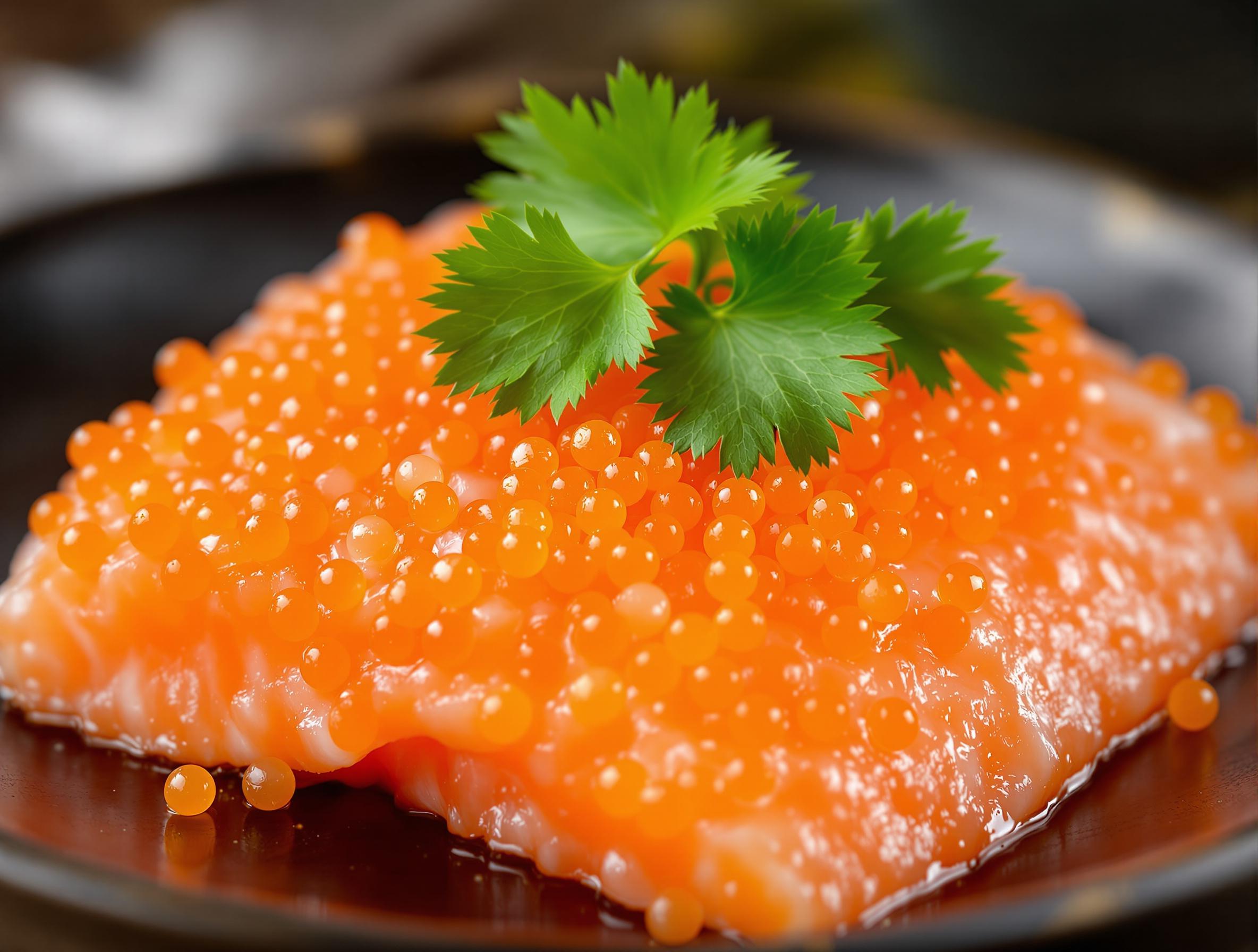Salmon roe is a bright orange delicacy loved by food enthusiasts worldwide. It is often seen in sushi dishes, fine dining, and gourmet recipes. The delicate, salty flavor and unique texture make it a treat for many people. But when you look at the price tag, you might wonder: Why is salmon roe so expensive?
The answer comes down to a mix of factors like harvesting processes, demand, quality, and more. In this article, we will break it down step by step to understand why this seafood delicacy costs so much.
What is salmon roe?
Salmon roe is the eggs of the salmon fish. These tiny, orange, pearl-like eggs are sometimes called “ikura” in Japanese. They are slightly salty, soft, and pop in your mouth when eaten.
People enjoy salmon roe in many ways, especially in sushi or as a topping on rice and other dishes. It is highly valued for its taste and appearance, adding a touch of luxury to meals.
While there are many types of fish roe, such as trout roe or sturgeon caviar, salmon roe is unique. It has a bold flavor and bright color, which makes it stand out. However, this uniqueness also contributes to its price.
Limited availability and demand
One of the biggest reasons salmon roe is so expensive is its limited availability. Salmon roe comes from specific types of salmon, such as Chinook, Coho, or Sockeye salmon. These fish are not always easy to find because their populations depend on seasonal migrations and natural conditions.
The short harvest season
Salmon only spawn during certain months of the year. This short season means that fishermen have limited time to catch the salmon and collect the roe. If they miss this window, they have to wait until the next season. This limited availability naturally makes salmon roe more valuable.
Wild vs. farmed salmon
Most salmon roe comes from wild salmon. Wild-caught fish are healthier and produce better-quality roe, but they are harder to catch. Fishermen must follow strict rules to protect salmon populations, which limits how many fish they can catch.
While farmed salmon is more common, it does not produce roe that is as high quality as wild salmon. This is because the diet and environment of farmed fish affect the texture and flavor of the eggs.
High demand worldwide
Salmon roe is popular in many parts of the world, especially in Japan, where it is called “ikura.” In Japanese culture, salmon roe is a staple ingredient in sushi and other traditional dishes. It is also used in Russia and other countries as a delicacy for special occasions.
Because salmon roe is loved worldwide, the demand for it is very high. However, with a limited supply of high-quality roe, the price goes up. This is basic economics: when something is rare but in high demand, it becomes more expensive.
Environmental factors
Another challenge is that salmon populations are affected by environmental changes. Climate change, overfishing, and pollution can all reduce the number of wild salmon. When fewer salmon are available, the supply of roe decreases, and prices increase.
In short, salmon roe is expensive because there is a limited supply, and the demand for it continues to grow. Add to this the challenges of catching wild salmon and the short harvest season, and it becomes clear why this delicacy comes with such a high price tag.
Quality and freshness standards

When it comes to salmon roe, quality and freshness are everything. These eggs are delicate and spoil quickly if not handled properly. Because of this, maintaining high standards during processing and shipping adds to the cost.
The importance of freshness
Salmon roe is highly perishable, which means it needs to be processed and packaged as quickly as possible after being harvested. Freshness is a key factor in determining the quality and taste of the roe. To keep it fresh, producers follow strict guidelines. For example:
- The roe must be cleaned, salted, and chilled immediately after harvesting.
- It needs to be kept at very cold temperatures during shipping and storage.
- Air-tight packaging is used to prevent contamination and preserve flavor.
These steps are time-consuming and costly but essential to ensure that customers get the best quality product.
Strict grading system
Not all salmon roe is the same. It goes through a grading system where the best eggs are separated from lower-quality ones. Here are some of the key factors that determine the grade of salmon roe:
- Color: High-quality roe has a bright orange or reddish color.
- Texture: The eggs must be firm and not mushy.
- Size: Larger eggs are generally considered better quality.
- Taste: The flavor should be clean, slightly salty, and not fishy.
Only the best roe is sold at premium prices, while lower-quality roe may be sold at a discount or not used at all. This grading process ensures that customers receive a consistent and high-quality product, but it also adds to the overall cost.
Careful shipping and handling
Because salmon roe is delicate, it requires special care during shipping. The roe must be kept refrigerated or frozen at all times to maintain freshness. Producers often use special packaging and cold storage methods to ensure the eggs arrive in perfect condition.
For international markets, like in Japan or the United States, shipping salmon roe can be very expensive. Fast shipping methods, such as air freight, are often used to deliver the product quickly. This additional cost is passed on to the buyer, making the roe even more expensive.
The nutritional benefits of salmon roe
Salmon roe is not just a luxury food; it is also packed with nutrition. Many people are willing to pay a high price for it because of its amazing health benefits. Let’s look at why salmon roe is considered a superfood.
Rich in omega-3 fatty acids
Salmon roe is one of the best natural sources of omega-3 fatty acids, which are essential for a healthy body. Omega-3 helps:
- Support heart health by reducing inflammation.
- Improve brain function and memory.
- Strengthen the immune system.
These fatty acids are not produced naturally by the body, so eating foods like salmon roe is one way to get them. Because of its high omega-3 content, salmon roe is often recommended as part of a healthy diet.
High in vitamins and minerals
Salmon roe is also packed with important vitamins and minerals, including:
- Vitamin A: Promotes good vision and boosts the immune system.
- Vitamin D: Supports bone health and helps absorb calcium.
- Vitamin B12: Keeps nerves and blood cells healthy.
- Iron: Prevents fatigue and supports energy levels.
- Phosphorus and magnesium: Help maintain strong bones and teeth.
These nutrients make salmon roe an excellent food for people looking to improve their overall health.
A source of high-quality protein
Salmon roe is a great source of protein. Protein is essential for muscle growth, tissue repair, and energy production. Just a small serving of salmon roe provides a good amount of protein, which makes it a nutritious option for athletes, growing children, and health-conscious adults.
Low in calories but nutrient-dense
One of the best things about salmon roe is that it is nutrient-dense but low in calories. This means you get a lot of vitamins, minerals, and healthy fats without eating a lot of food. For example, a tablespoon of salmon roe contains only about 40 calories but provides a significant boost of nutrients.
Why nutrition adds to the price
Because salmon roe is such a nutritious food, its value increases. People looking for high-quality, natural foods are willing to pay more for it. With its omega-3 content, vitamins, and proteins, salmon roe is a premium product that benefits both health and wellness.
Cultural and luxury appeal

Salmon roe has a long history and is deeply tied to cultural traditions, especially in countries like Japan and Russia. Its luxury status also makes it a symbol of celebration and fine dining, further adding to its high price.
A staple in Japanese cuisine
In Japan, salmon roe, known as “ikura,” is a beloved ingredient in traditional dishes. It is often served on sushi, rice bowls, or as part of luxurious seafood platters. Japanese chefs take great care in preparing and presenting salmon roe, treating it as a delicacy.
The bright orange eggs are not just about taste—they are also prized for their appearance. The vibrant color adds beauty and elegance to any dish, making it perfect for special occasions.
A symbol of luxury in Russia
In Russia, salmon roe is a common feature at celebrations and festive events. Known as “red caviar,” it is often served on buttered bread or blini (thin pancakes). For many Russians, salmon roe represents wealth and prosperity. Its association with luxury has helped maintain its high value.
Gourmet dining around the world
Beyond Japan and Russia, salmon roe has gained popularity in fine dining restaurants worldwide. Chefs use it to elevate dishes, adding a pop of color, texture, and a salty burst of flavor. Its uniqueness makes it a favorite for food lovers who are willing to pay a premium price.
Why cultural appeal increases cost
Because salmon roe is associated with luxury and tradition, the demand for it is higher during holidays and special events. This increased demand, combined with limited supply, drives up the price even more. Whether it is served in sushi or as a festive treat, salmon roe is seen as a premium food that is worth the cost.
you might also like:
If you love experimenting with unique flavor profiles, take a look at our guide to Salmon Roe Idea Recipes for elegant appetizers that feature the delicate, salty burst of salmon roe. Craving something simple yet impressive? Try our Salmon Bites Recipe for crispy, savory bites perfect for any occasion. If you’re in the mood for a hearty and refreshing meal, our Southwest Chicken Salad combines bold flavors, seasoned chicken, fresh veggies, and a creamy dressing for the perfect balance of taste and texture. Whether it’s a gourmet touch or a satisfying dish, these recipes offer something for everyone.
Frequently Asked Questions (FAQs)
1. Why is salmon roe more expensive than regular fish eggs?
Salmon roe is more expensive because of its high quality, careful harvesting process, and strong demand worldwide. Other fish eggs might not have the same nutritional benefits or cultural significance.
2. How is salmon roe different from caviar?
Caviar usually refers to the eggs of sturgeon fish, which are smaller and black in color. Salmon roe is larger, bright orange, and has a bolder flavor. Both are luxury items, but caviar is often more expensive.
3. Can I buy salmon roe at an affordable price?
Lower-quality salmon roe or frozen roe is sometimes sold at a lower price. However, for fresh, high-quality roe, you will usually need to pay more.
4. What makes salmon roe high quality?
High-quality salmon roe has a bright color, firm texture, and clean flavor. The eggs must be fresh, properly processed, and carefully handled to maintain their quality.
5. Where is salmon roe most commonly produced?
Salmon roe is primarily produced in Japan, Russia, and parts of North America, where wild salmon are caught during the spawning season.
6. Is salmon roe healthy to eat regularly?
Yes! Salmon roe is rich in omega-3 fatty acids, vitamins, and protein. It is a nutritious food that can support heart health, brain function, and overall wellness.
Conclusion
Salmon roe is a unique delicacy that combines luxury, tradition, and nutrition. Its high price comes from the labor-intensive harvesting process, limited supply, and worldwide demand. Add to this its incredible health benefits and cultural significance, and it is easy to see why salmon roe is so expensive.
While it may not be an everyday food for most people, its value makes it a special treat worth enjoying on rare occasions. Whether served in sushi, as a topping, or part of a festive meal, salmon roe remains a sought-after delicacy that stands out for its quality and appeal.

